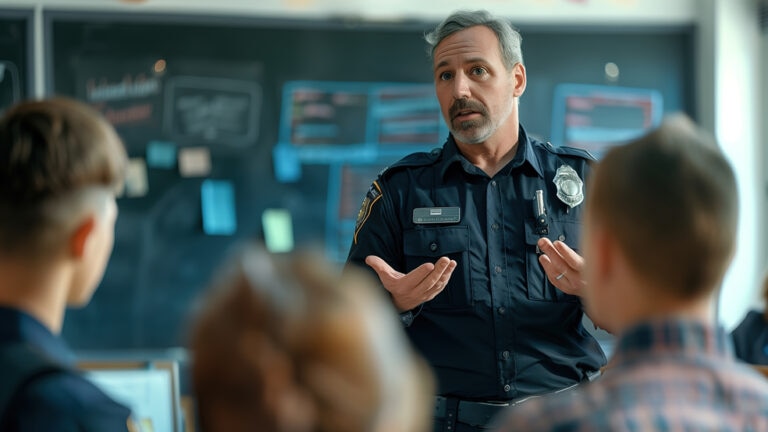
Every day, schools are tasked with important work. At the same time, they must face risks like violent incidents, bullying, legal system abuse, workplace violence and more. By understanding the unique issues and challenges they may be up against, schools will be in a better position to help mitigate their potential risk exposure. The following emerging risks are some of the top concerns facing schools today:
1. Violent events
While only the most extreme violent event headlines grab public attention, statistics indicate violent events are on the rise. Research from the FBI shows a steady increase in both incidents and casualties over the past two decades. This is why it is imperative to plan for the unthinkable. These four general steps can help schools build a team, plan, communicate, train, and audit policies for threats.
2. Legal system abuse
Legal system abuse includes policyholder or plaintiff attorney practices that increase costs and time to settle insurance claims. Schools’ risks face a challenging legal environment with nuclear verdicts becoming more common. Aggressive plaintiff attorney tactics, earlier attorney involvement and third-party litigation funding contribute to legal system abuse. While schools may have previously benefitted from goodwill, attorneys are increasingly involved in liability claims.
3. Law enforcement challenges
Various state departments of education, school board associations, school administrators, and lawmakers in a small but growing number of states are considering policies to allow teachers, school administrators and others to carry firearms at school. Additionally, some states are actively encouraging the establishment of school police departments to alleviate the strain of resources on local law enforcement. The most effective method of providing school security is utilizing school resource officers (SROs) through partnership with local law enforcement agencies.
4. Bullying
Mounting evidence suggests that bullying in schools can have long-lasting effects on victims’ mental, social, academic and physical health. What’s more, it can impact both those that are targeted and others in the environment who witness it going on. This is why it is imperative that bullying awareness and prevention remain top of mind and incorporated into risk-management strategies.
5. Sexual misconduct
Schools face growing and unique risks when it comes to confronting and combating sexual misconduct. It is critical to have procedures in place to manage reports, accusations and investigations. Each educational institution’s policy should detail how allegations must be reported, to whom, the specific steps of the investigation process and how the results of the investigation will be communicated.
6. Aggression towards school staff
A 2023 WSJ article noted an increase in violence against teachers since returning to in-person learning post-COVID. This is a trend that increasingly impacts workers compensation claim activity. Workplace violence results in physical, emotional and financial impacts to victims, drives down productivity and morale and increases turnover. Schools must ensure that workplace violence procedures are developed and implemented. Staff should be properly trained and know how to respond to avoid injury.
7. Special education student safety
The rise in instances of teachers abusing special needs students in schools reflects critical failures in the educational system, primarily rooted in staffing shortages and a lack of adequate support, resources, and oversight. Inadequate staffing often leads to overwhelmed teachers who may struggle to manage classrooms effectively, increasing the risk of inappropriate behavior. The absence of additional resources can create an environment where the unique needs of special needs students are overlooked, leaving them vulnerable to harm. To combat this troubling trend, schools must prioritize promoting the welfare of all students within their culture, establishing policies and practices that emphasize safety and respect. By creating a supportive environment for both teachers and students, schools can ensure that educators are equipped with the training and resources needed to foster positive interactions and address the specific challenges faced by special needs students, ultimately protecting their well-being.
8. Property concerns
Severe convective storms, water damage, snow loading and aging infrastructure are key areas of concern for property claim activity. Expansive, flat roofs make schools especially susceptible to wind and hail damage. Water damage can be weather-related or result from failure or improper maintenance of plumbing systems and water lines. Snow loading is a leading cause of roof collapse and can become an issue from numerous factors including heavier snowfall amounts than anticipated for the area, degradation of structural integrity of the roofing system, additions or modification to the original building or improper design or installation. Many schools are grappling with the challenges posed by aging infrastructure with the average age of a school building being 49 years, leading to outdated facilities that may not adequately meet the needs of today’s students and educators.
9. Electric vehicles
Electric vehicles (EVs) are increasingly common for schools. The 5-year federal Clean School Bus Program (2022 – 2026) pays school districts up to $375,000 to replace a diesel bus with an electric one. One of the biggest risks associated with EVs is the risk of fire caused by the batteries reaching thermal runaway due to failure of components in the batteries. The initial cost of an electric bus is 3 – 4 times that of a traditional diesel bus, and the cost of repair is also 46.9% more for an electric vehicle than a gas-powered vehicle.
10. Solar energy
Schools are increasingly investing in solar panel projects which provide financial savings and environmental benefits. There are now nearly 9,000 schools across the country with solar installations. When installed on a building roof, there are additional risks, such as increased fire load and electrical hazards, roof damage from installation and weather damage. Rooftop solar panels also present challenges when fighting fires and increase the cost of roof maintenance and installation.
Prepared to handle school risks
It’s important for schools to be aware of potential risk factors so they know how to anticipate, mitigate and respond to protect their students and staff better. Working with a trusted insurer can help them prepare for the unexpected.
To learn more about how we serve schools and other public institutions, visit our public entity page.
Featured insights
This website is general in nature, and is provided as a courtesy to you. Information is accurate to the best of Liberty Mutual’s knowledge, but companies and individuals should not rely on it to prevent and mitigate all risks as an explanation of coverage or benefits under an insurance policy. Consult your professional advisor regarding your particular facts and circumstance. By citing external authorities or linking to other websites, Liberty Mutual is not endorsing them.



